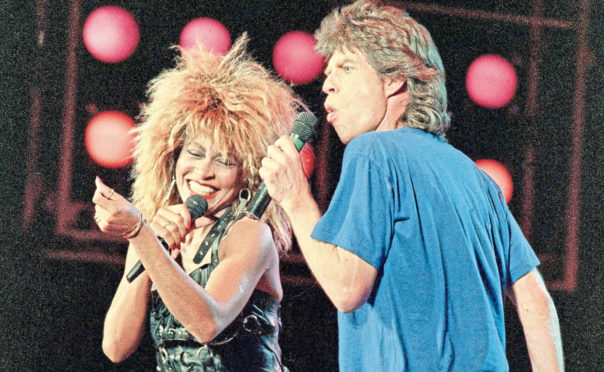
It was dubbed “The Woodstock of the ’80s”.
Thirty-five years ago, tens of thousands of people gathered at Wembley Stadium for the Live Aid concert, the world’s biggest rock festival.
Organised by Boomtown Rats singer Bob Geldof the event raised millions of pounds for famine relief in Africa. Billed as the “global jukebox”, Live Aid was held simultaneously at Wembley Stadium and John F Kennedy Stadium in Philadelphia.
Wembley was packed with a crowd of 72,000, and TV pictures, co-ordinated at BBC Television Centre, were beamed to more than 1.5 billion people in 160 countries in the biggest broadcast ever known.
The transatlantic concert began in London’s midday sunshine with a fanfare for Prince Charles and Princess Diana and Status Quo performing Rockin’ All Over The World.
Stars were flown in by helicopter to the arena and the star-studded line-up included David Bowie, George Michael, Elton John, Queen, Bryan Ferry and Dire Straits.
Frequent appeals by Bob Geldof reminded viewers of the motive for the occasion: “Don’t go to the pub tonight. Please stay in and give us your money. There are people dying right now.”
He himself took the call from the ruling family in Dubai who made the biggest single donation of £1 million.
Across the UK eight appeal centres were set up with 200 phone lines to handle donations of up to £2,000.
In the US 22,000 pledges were received within five minutes of the Beach Boys taking to the stage in the simultaneous concert in Philadelphia.
The 16-hour music marathon was completed there with acts including Bob Dylan, Duran Duran and Paul Simon.
On the same day, concerts inspired by the initiative were held in other countries, such as the Soviet Union, Canada, Japan, Yugoslavia, Austria, Australia and West Germany. It was one of the largest-scale satellite link-ups and television broadcasts of all time with nearly 40% of the world population tuning in.
Nine months after the droughts, disease and famine in north Africa had been brought to the media’s attention, the United Nations had warned that 160 million people were still affected. Governments had begun a global relief operation but there were still problems of distribution in the worst hit areas – mainly Sudan and Ethiopia.
The 1985 Live Aid concert was conceived as a follow-on to the successful charity single Do They Know It’s Christmas, also the brainchild of Geldof, along with Midge Ure.
In October 1984, images of hundreds of thousands of people starving to death in Ethiopia were shown in the UK in Michael Buerk’s BBC News reports on the famine.
The reports shocked Britain, motivating its citizens to inundate relief agencies, such as Save The Children, with donations, and to bring the world’s attention to the crisis in Ethiopia.
Geldof also saw the report, and called Ure and together they quickly co-wrote the song in the hope of raising money for famine relief. Geldof then contacted colleagues in the music industry, such as Bono, Boy George, Paul Young and Phil Collins, and persuaded them to record the single under the title Band Aid for free.
Following this, the idea for a benefit concert, Live Aid, was born.

Enjoy the convenience of having The Sunday Post delivered as a digital ePaper straight to your smartphone, tablet or computer.
Subscribe for only £5.49 a month and enjoy all the benefits of the printed paper as a digital replica.
Subscribe